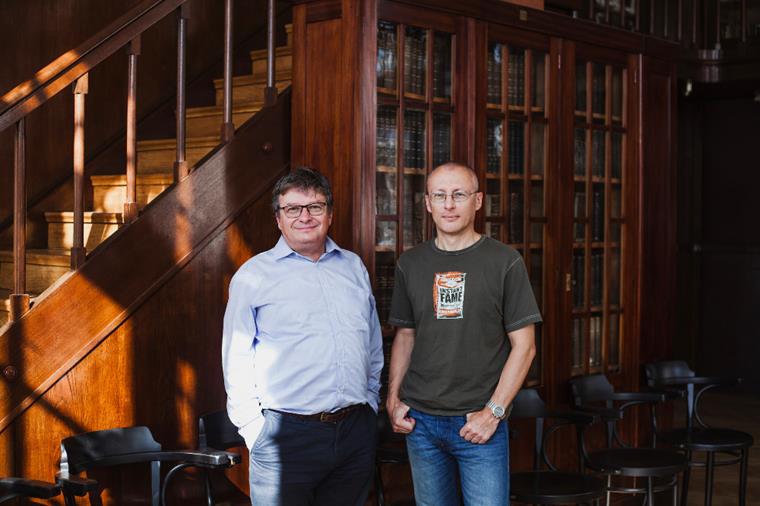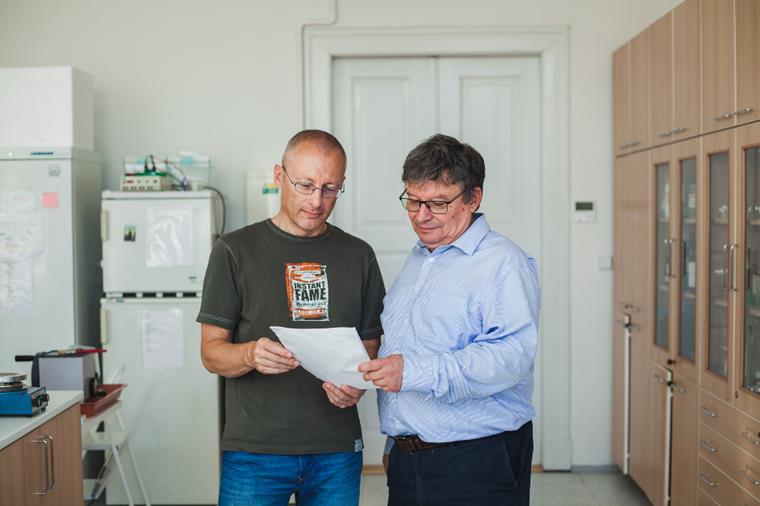Metastasising as a goal of therapy? In research, we have a strategic advantage over the rest of the world!
This year, the US Food and Drug Administration issued a proclamation where it calls upon pharmaceutical companies to engage in research of migration of tumour cells and tumour microenvironment. Several research groups from our faculty already study this area, and that was used in the formation of a unique Centre of Tumour Ecology of the 1st Faculty of Medicine of the Charles University. The project, supported by the Ministry of Education of the Czech Republic by almost 300 million CZK from EU funds, was launched on 1 September 2018.
What should we imagine under the notion of tumour ecology?
K. Smetana: It is important to realise that aside from tumour cells, tumours contain many other cell types which have not been transformed, such as fibroblasts, cells of the immune system, endothelial cells, and their products. These support cells in a sense predetermine the establishment of a microenvironment that not only supports tumour growth but also the migration of tumour cells, that is, the development of metastases. It is a highly complex cellular microsystem.
A. Šedo: Sometimes, people also speak of tumour ecology or tumour sociology, which very well captures the communication dimension between the tumour and non-tumour cells which benefit the tumour and unfortunately harm the patient. Tumour cells on their own do not have at their disposal all that is needed for a tumour to develop but are capable of ‘asking’ other cells to do the ‘dirty job’ for them.
K. Smetana: It is becoming apparent that tumour microenvironment is almost identical to the environment of a healing wound. A tumour thus uses certain pre-existing, pre-defined interactions and processes which resemble processes in wound healing and are thoroughly beneficial. A tumour misuses them for its benefit.
A. Šedo: On this subject, I would like to add a little gem, namely that already in 1986, Professor Harold F. Dvorak, a Czech-American working at Harvard, had published in the New England Journal of Medicine a brief communication which bore an almost heretical heading ‘Tumors: Wounds that do not heal’.

Does that mean that the study of tumour microenvironment is now becoming more important?
A. Šedo: Without a doubt. On a clinical level, tumour therapy is nowadays seen as not something aimed ‘merely’ at the tumour and reduction of its size, but more comprehensively because tumours affect the body systemically. Hand in hand with this, our scientific research must also be comprehensive.
K. Smetana: This is also evidenced by the fact that this year, the US Food and Drug Administration approved the registration of the first drug that suppresses the migration of tumour cells and formation of metastases. At the same time, it issued a call in which it invites pharmaceutical companies to engage in research of tumour cell migration and tumour microenvironment, because this is an area which so far has not been targeted by the pharmaceutical industry. But even earlier, many people and research groups, including people at our faculty, realised that these subjects should be studied. In collaboration with colleagues from the Faculty of Science of the Charles University and the Academy of Sciences of the Czech Republic, we have been systematically investigating the possibilities of therapeutic interventions in tumour ecosystems for a long time.
Why was the Centre for Tumour Ecology formed now when you have been working on this subject for some time?
A. Šedo: It is a great advantage of this project that it does not take the form of yet another building and yet another administrative unit. We focus our human resources and finances on an efficient and comfortable collaboration between teams that focus on particular issues. We want them to be able to synchronise their research and share the technologies and instruments they will receive. Naturally, creation of the centre has a positive impact not only on the logistics and technological facilities. It will also lead to a better preparation of our postgraduate students.
K. Smetana: One should, however, note that even if this project had not been approved, we would have continued in our investigation of tumour microenvironment anyway, albeit with less comfort and more laboriously.
Do similar centres exist elsewhere in the world?
K. Smetana: Many different laboratories and centres do deal with the issue of tumour ecology but as far as I know, no one does it in a way that would be as centralised as here.
A. Šedo: It is truly unique that our centre includes colleagues who do synthetic chemistry, biochemistry, molecular biology, physiology, pathology, or anatomy and embryology. We also have direct links to clinicians, who are an important ‘end point’. In fact, we work with the common denominator of various tumour diseases. At the moment, we are focusing on squamous cell carcinoma of head and neck, pancreatic carcinoma, glioblastoma, and melanoma, which are in their biological concepts all highly similar.
One of the goals of the project is to further develop the research teams and improve the efficiency of research centres. Is that connected to including international partners?
K. Smetana: International collaboration was even one of the conditions of the project application. We have been collaborating on projects with the Ludwig-Maxmilians-Universität München, Universiteit Antwerpen, or the Harvard University for some time, but recently, universities in Innsbruck and Trondheim as well as the Centre for Advanced Studies in Genoa have also shown interest and want to work with us.
A. Šedo: We have a prolongation for further project also with the Sorbonne in Paris…
K. Smetana: ... so international collaboration is just as we would like it, namely intensive and fruitful.
A. Šedo: The fact remains, however, that interest in collaboration is coming mainly from excellent partners who are focused on a similar field. Their geographic position is not very important. In many cases, we have established really long-term collaboration, some going back twenty years, and further institutions are showing interest because they believe that working with us could be beneficial.
K. Smetana: I would like to emphasise this, because many institutions took the initiative in addressing us. The Genoa centre even wants to prepare a grant application for another European project.
Will students, too, have a chance to participate in the work of the Centre for Tumour Ecology?
K. Smetana: Definitely. Even now we have both pre- and postgraduate students working in our labs. Nevertheless, thanks to the centre, which will provide good financial backing, we will be able to increase the number of students and above all, they will have better conditions for their work. And that is something I find especially important.
A. Šedo: We must realise that postgraduate students receive a stipend of about 7,000 CZK a month. No one can live on that kind of money. In a situation where we cannot offer them any sort of employment, they must make a living in some other way, which is why they cannot study more effectively. If these students become part of the Centre of Tumour Ecology, they will be employed by the faculty and will be able to fully focus on what they should do, namely, to improve their qualifications and be valid members of research teams.

What will the creation of such a centre mean for the faculty?
A. Šedo: In addition to the scientific benefits, it is a highly prestigious thing because there is just a limited number of such ‘centres of excellence’. On top of that, we are happy to see that we have at our faculty truly outstanding teams which were able to put together such a large and competitive project. In future, this will bring the faculty – naturally depending on how research results will start coming in – also outputs in the form of countable bibliographic data. By meeting the targets of this project, our faculty thus will also improve its evaluation. I think, however, that this administrative view should always come second. What is of primary importance are new results for science and medicine.
K. Smetana: I would just like to add that thanks to the centre, our faculty will receive some better technological facilities…
A. Šedo: ... and that is very important because otherwise it is really difficult to get money for investments. The centre will also help us increase the salaries of our leading researchers who oftentimes do science in a sense as a charity, out of altruism.
The project is approved for five years. How are you going to provide for its sustainability beyond that point?
A. Šedo: I assume that thanks to our results, we will be able to apply for further grants or projects. The advantage is that as a consortium with a provable history we will have a better chance of success.
K. Smetana: One could also expect that the project may lead to commercial collaboration with the pharmaceutical industry. And since research teams in our centre have been the investigating migration of tumour cells and tumour microenvironment long term, we have perhaps a certain intellectual advantage that would be attractive also to industrial partners.
AŠ: We are starting to open preliminary negotiations with commercial subjects. These are, however, highly sensitive issues and intellectual property in general is a complicated thing. Nevertheless, we will try to find a suitable way of working with the industry. What is, however, clear is that interest in our infrastructure is growing already, which shows that we have a chance – as well as an obligation – to continue working on these issues with this team.
jat
